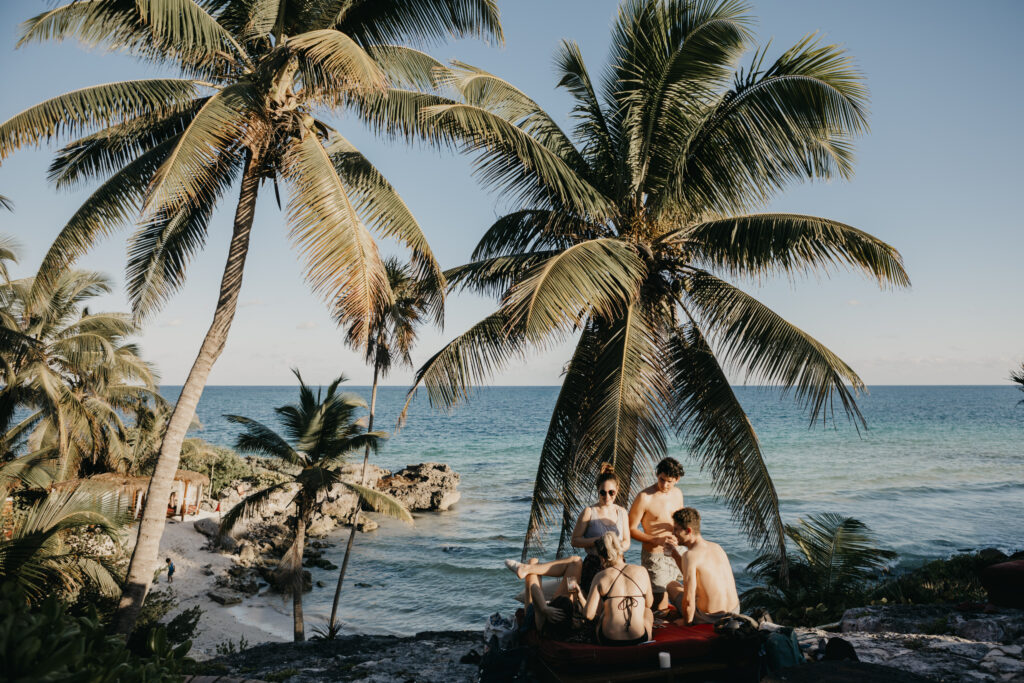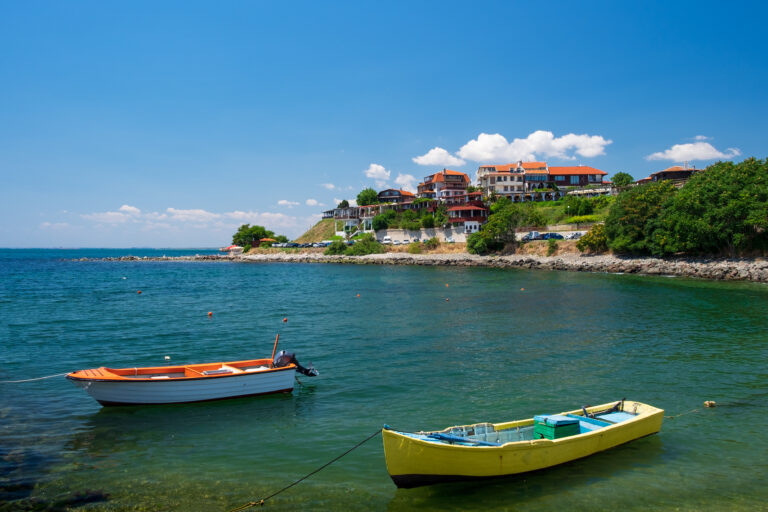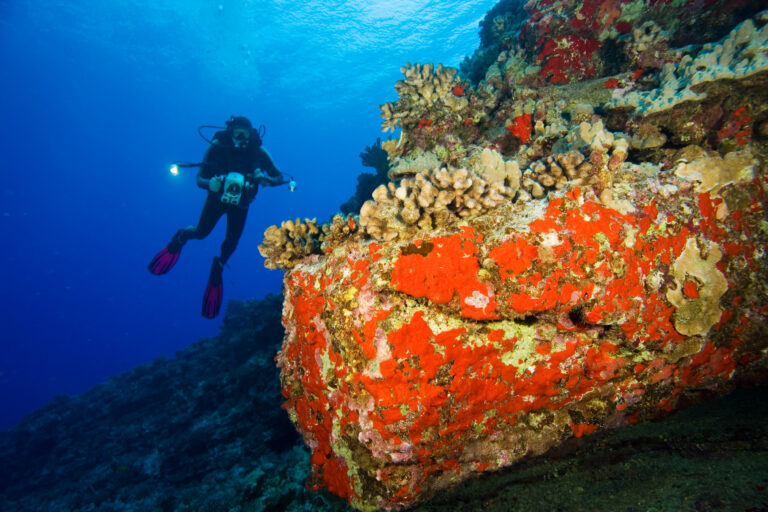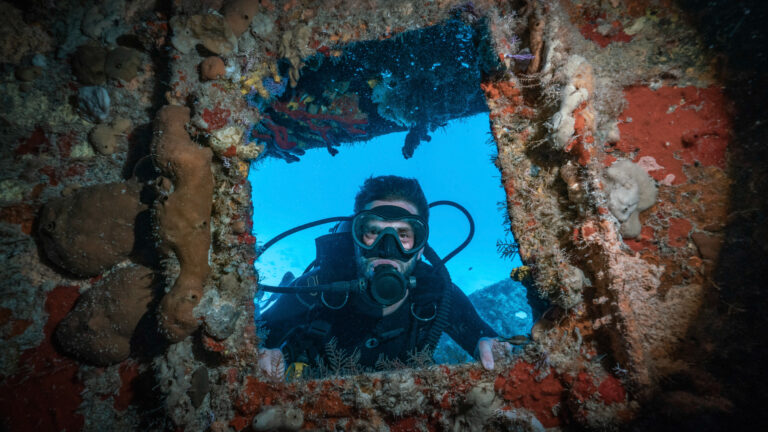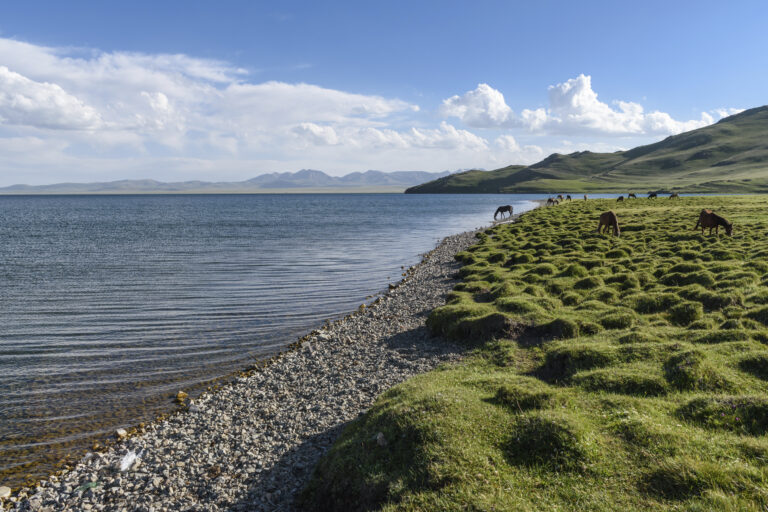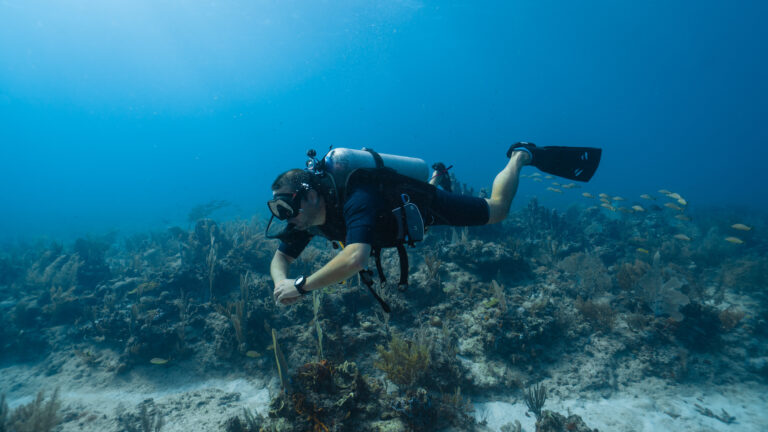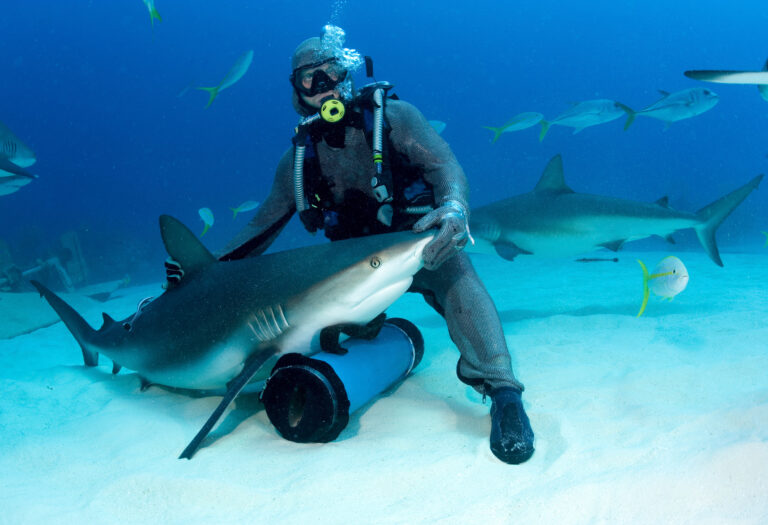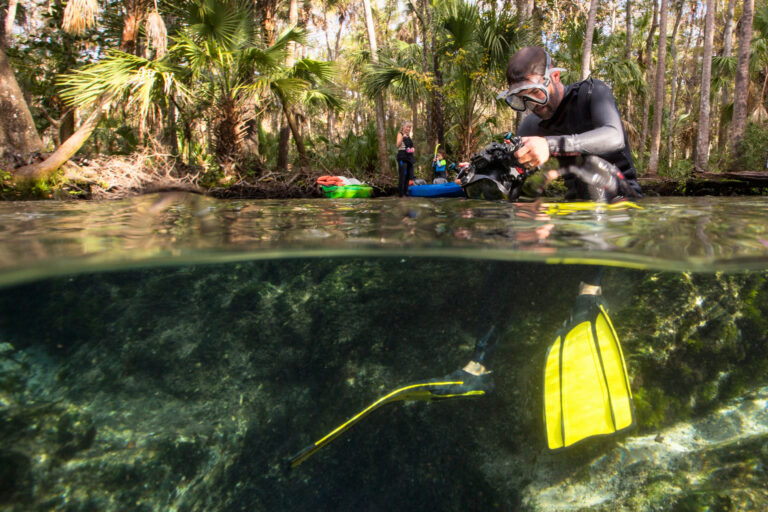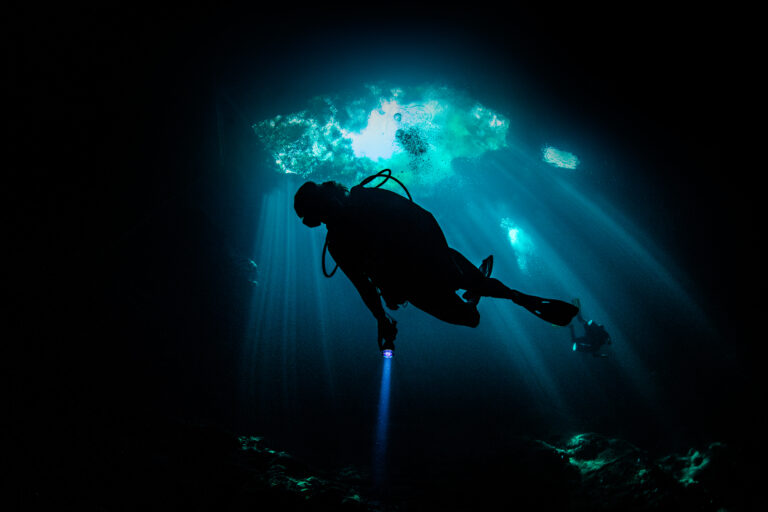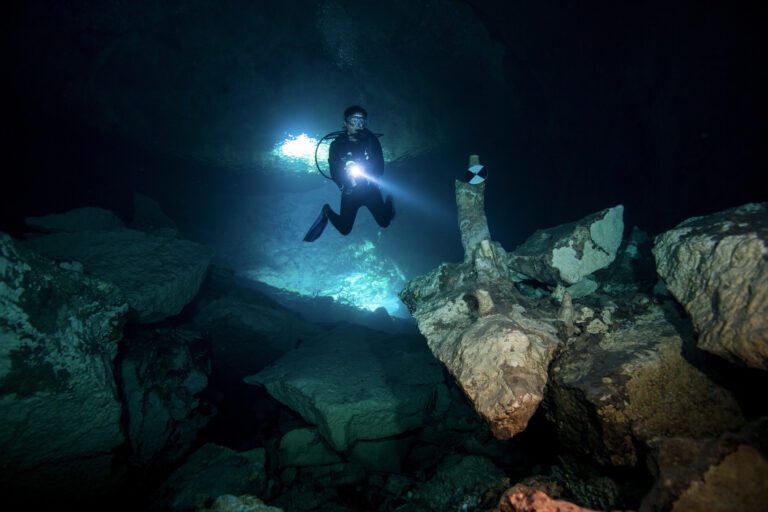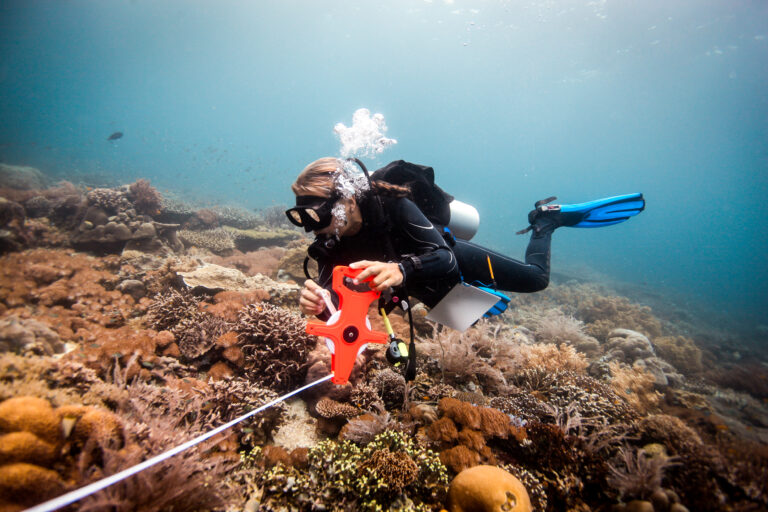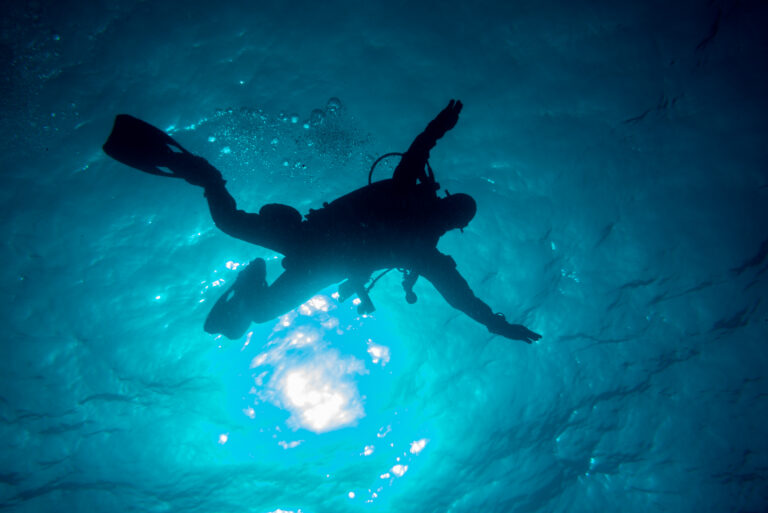SCUBA DIVERS’ TRAVEL GUIDE TO Mexico
Mexico is a land of contrasts, where ancient civilizations coexist with modern cities, where desert landscapes give way to lush rainforests, and where the Pacific Ocean meets the Caribbean Sea. For scuba divers, Mexico offers a wealth of opportunities to explore its diverse and rich underwater world. Whether you want to dive with whale sharks in the Gulf of Mexico, encounter colorful coral reefs and marine life in the Riviera Maya, or discover the mysterious cenotes and caves of the Yucatan Peninsula, Mexico has something for every diver. From beginner to advanced, from recreational to technical, Mexico is a scuba diving paradise that will leave you breathless and wanting more.
LOCATION AND GEOGRAPHY
Mexico, a scuba diver’s paradise, is geographically blessed with two vastly different coastlines—the Pacific Ocean to the west and the Caribbean Sea to the east—each offering a unique underwater experience. The Yucatán Peninsula is renowned for its Riviera Maya and the Great Mayan Reef, the second-largest barrier reef in the world, which stretches from the northern tip of the peninsula down through Belize. Here, divers can explore the famous cenotes, which are freshwater sinkholes and cave systems unique to the region. On the Pacific side, the rugged Baja California Peninsula provides access to the biodiverse waters of the Sea of Cortez, known as “The Aquarium of the World,” and the remote Socorro Islands, where divers can encounter large pelagic species. Mexico’s varied topography above and below the water, including coral reefs, caves, and volcanic seamounts, makes it an exceptional destination for divers of all levels seeking to explore the rich marine ecosystems and the geological wonders that lie beneath the waves.
VISA AND ENTRY REQUIREMENTS
Before embarking on your underwater adventure in Mexico’s vibrant coral reefs and mysterious cenotes, it’s essential to ensure you have the correct visa and entry requirements. Travelers from the United States, Canada, the EU, and many other countries can enter Mexico visa-free for tourism purposes for up to 180 days; however, a valid passport is mandatory. Upon arrival, you’ll receive a Forma Migratoria Múltiple (FMM), which you must keep safe as it is required upon departure. If you’re planning a longer stay or your country isn’t on the visa exemption list, you’ll need to apply for a visa in advance at a Mexican consulate or embassy. Always check the latest entry requirements with the Mexican immigration authorities or the consulate before your trip, as regulations can change. Additionally, ensure your passport has at least six months of validity remaining from your planned date of entry to avoid any issues at the border. With the paperwork in order, you can dive into the crystal-clear waters and explore the rich marine life that Mexico has to offer.
GETTING TO Mexico
Getting to Mexico for an unforgettable scuba diving adventure is a straightforward journey for travelers from around the globe. Major international airlines offer direct flights to various Mexican cities from the United States, Canada, Europe, and other parts of Latin America, with the most common gateways being Cancun, Mexico City, and Cozumel for those aiming to explore the vibrant underwater life. Upon arrival, visitors can choose from a range of domestic flights, comfortable long-distance buses, or car rentals to reach premier diving destinations such as the Great Maya Barrier Reef in the Riviera Maya, the cenotes in Yucatán, or the remote Socorro Islands. For those coming from the US, driving across the border is also an option, particularly to access dive sites in Baja California. Regardless of the mode of transportation, Mexico’s well-established tourist infrastructure makes it easy to navigate to your coastal destination, where the warm, clear waters teeming with marine life await.
BEST TIME TO DIVE
The best time to scuba dive in Mexico largely depends on the specific region and what you wish to experience underwater. Generally, the peak diving season runs from June to August when the waters are warmest, offering excellent visibility and comfortable conditions for divers of all levels. However, for those seeking to encounter the majestic whale sharks, the ideal time is from June to September, particularly around Isla Mujeres and Holbox. On the Pacific coast, the cooler months from November to May are prime for diving in the Sea of Cortez, where you can witness a remarkable aggregation of marine life, including playful sea lions and migrating humpback whales. Meanwhile, the cenotes of the Yucatán Peninsula, with their crystal-clear waters and ancient geological formations, can be dived year-round, but are best from April to November when the light beams penetrating the sinkholes create an otherworldly atmosphere. It’s important to note that while the summer months offer great conditions, they also coincide with the rainy season, which can occasionally affect visibility and accessibility to some dive sites.
ACCOMMODATION OPTIONS
Mexico’s scuba diving destinations offer a wide array of accommodation options to suit every diver’s preference and budget. From the vibrant shores of Cozumel and the Riviera Maya to the remote beauty of Socorro Island, you can choose from luxurious all-inclusive resorts that cater to every need, often with on-site dive centers and exclusive access to the best dive spots. Boutique hotels and eco-lodges provide a more intimate experience, often focusing on sustainable practices and personalized service. For those on a tighter budget, hostels and guesthouses are available, particularly in popular areas like Playa del Carmen and Tulum, where the local dive scene thrives. Liveaboard boats are another exciting option, allowing divers to wake up directly above the region’s most pristine reefs and pelagic action, maximizing water time and offering a truly immersive diving adventure. No matter where you stay, the warm Mexican hospitality and the proximity to some of the world’s most spectacular underwater environments will make your dive trip unforgettable.
DIVE OPERATORS AND DIVE SHOPS
In the vibrant waters of Mexico, a plethora of dive operators and shops await to cater to the needs of underwater adventurers, each offering unique experiences in the country’s diverse dive destinations. From the cenotes of the Yucatán Peninsula to the Pacific coast’s pelagic encounters, these establishments are staffed by professional, multilingual instructors who prioritize safety and environmental sustainability. Many shops in Mexico are affiliated with recognized certification agencies like PADI, SSI, and NAUI, ensuring high standards of training and equipment. Whether you’re looking to explore the coral gardens of Cozumel, the whale sharks of Isla Holbox, or the manta rays of Socorro Island, these operators provide comprehensive services including gear rental, guided tours, and even photography workshops. With options ranging from luxurious liveaboards to quaint beachside huts, divers can find packages tailored to their experience level and interests, all promising an unforgettable immersion into Mexico’s underwater marvels.
TRANSPORTATION WITHIN Mexico
In Mexico, transportation options for scuba divers are as diverse as the underwater landscapes awaiting exploration. For those looking to dive in the vibrant waters of the Caribbean Sea, including the world-renowned reefs of Cozumel or the cenotes near Tulum, renting a car can offer the most flexibility for reaching remote dive sites and carrying gear. However, for those without a driver’s license or who prefer not to drive, comfortable and affordable bus services like ADO connect major cities and tourist destinations with frequent schedules. In coastal areas, collectivos (shared minibuses) are a popular and economical choice for shorter distances. For island destinations such as Isla Mujeres, ferries are reliable and offer regular service. In more developed areas like Cancun and Playa del Carmen, taxis are readily available, and some dive shops may even offer shuttle services to and from your accommodation. For the ultimate convenience, especially when traveling with bulky dive equipment, consider arranging transportation through your dive operator, which can include everything from airport transfers to daily trips to the dive sites.
CURRENCY AND PAYMENT METHODS
In Mexico, the official currency is the Mexican Peso (MXN), which is the most widely accepted form of payment across scuba diving destinations, from the vibrant reefs of Cozumel to the cenotes of the Yucatán Peninsula. While major credit cards such as Visa, MasterCard, and American Express are accepted at most dive shops, resorts, and larger establishments, it’s advisable for divers to carry some cash for smaller purchases, tips, or in areas where electronic payments may not be as readily accepted. ATMs are available in urban areas and tourist hotspots, but it’s prudent to withdraw cash before venturing into more remote diving locations. It’s also worth noting that while US dollars are often accepted, especially in tourist-centric areas, the exchange rate can be less favorable than at banks or currency exchange offices. Always ensure you have a mix of payment methods and a small reserve of cash to cover any incidental expenses, ensuring a smooth and enjoyable underwater adventure in Mexico’s breathtaking waters.
LANGUAGE AND COMMUNICATION
When diving in Mexico, communication both above and below the water is key to a safe and enjoyable experience. Spanish is the official language, and while many dive operators and locals in tourist areas speak English, learning basic Spanish phrases can greatly enhance your interactions and show respect for the local culture. Underwater, divers universally rely on hand signals to communicate, so it’s essential to review these before your dive, especially any that might be specific to the region or dive site. It’s also not uncommon for dive briefings to be conducted in multiple languages, reflecting the international clientele drawn to Mexico’s rich dive sites. Whether you’re exploring the vibrant reefs of Cozumel, the mysterious cenotes of the Yucatán Peninsula, or the pelagic-rich waters of the Socorro Islands, clear communication with your guide and dive buddies will ensure a memorable and harmonious underwater adventure.
LOCAL CULTURE AND ATTRACTIONS
Mexico’s vibrant culture and myriad attractions extend far beyond its underwater treasures, offering a rich tapestry of experiences for the discerning traveler. After surfacing from the crystal-clear cenotes of the Yucatán Peninsula or the Pacific’s teeming marine life, divers can immerse themselves in a nation steeped in history and tradition. Explore the ancient ruins of the Maya and Aztec civilizations, such as the iconic Chichén Itzá or the majestic Teotihuacán pyramids. Savor the local cuisine, a flavorful fusion of indigenous and Spanish influences, where each region boasts its own specialty, from the seafood of Baja California to the complex moles of Oaxaca. Festivals abound, with the Day of the Dead and the Guelaguetza being just a glimpse into the colorful tapestry of Mexican celebrations. Art enthusiasts will revel in the works of Frida Kahlo and Diego Rivera, while the sounds of mariachi fill the air in plazas across the country. Whether you’re strolling through the colonial streets of San Miguel de Allende or soaking up the sun on the beaches of Playa del Carmen, Mexico’s local culture and attractions offer a feast for the senses both above and below the water.
CULTURAL ETIQUETTE AND TIPS
When scuba diving in Mexico, it’s essential to approach the vibrant local culture with respect and an eagerness to learn. Mexican people are known for their warm hospitality and a relaxed attitude towards life, often referred to as “mañana culture,” which emphasizes the importance of enjoying the present moment. However, punctuality for diving trips is still expected. It’s customary to greet with a friendly “hola” and a handshake, and when more familiar, a pat on the back or even a hug. Be mindful of conservation efforts, especially in ecologically sensitive areas like the Mesoamerican Barrier Reef; avoid touching or taking marine life, and adhere to all local diving regulations. Tipping is customary and greatly appreciated in Mexico; for dive guides and boat crews, 10-15% of the cost of the excursion is standard, depending on the quality of service. Engage with local dive shops and respect their expertise, as they are the stewards of their underwater realms. Lastly, take the time to learn a few phrases in Spanish; even basic communication can enrich your interactions and endear you to your hosts.
LOCAL LAWS AND REGULATIONS RELEVANT TO TOURISTS
When planning a scuba diving trip to Mexico, it is crucial to familiarize yourself with local laws and regulations to ensure a safe and lawful experience. Mexico’s National Marine Parks, where many popular dive sites are located, require divers to adhere to strict guidelines to protect the delicate marine ecosystems. It is mandatory to dive with an authorized and licensed dive operator, who will inform you about the specific rules, such as no-touching or taking anything from the underwater environments, maintaining a safe distance from the coral reefs, and limiting the use of sunscreen to biodegradable products to prevent reef damage. Additionally, certain protected areas may require a fee or a special permit for access. Tourists should also be aware that fishing or spearfishing without a proper license is illegal and heavily penalized. It’s important to carry identification and your diving certification at all times, as random checks by local authorities are common. Lastly, be mindful of seasonal regulations, such as those protecting the migration of whale sharks and other marine life, which can affect diving schedules and permissible activities. By respecting these regulations, divers contribute to the conservation of Mexico’s stunning underwater habitats, ensuring they remain vibrant for future generations.
SAFETY TIPS AND EMERGENCY CONTACTS
When diving in the vibrant waters of Mexico, safety should be your utmost priority. Always dive within your certification limits and ensure that your equipment is well-maintained and appropriate for the dive conditions. It’s crucial to stay hydrated, avoid alcohol before dives, and be vigilant about sun protection. Dive with a buddy and maintain clear communication, both underwater and with your guide or boat operator. Familiarize yourself with local species to avoid harmful encounters, and respect the underwater environment by not touching or taking marine life. In case of an emergency, know the location of the nearest decompression chamber, which can be found in areas like Cozumel, Playa del Carmen, and Cancun. Keep emergency contact numbers handy, including the local coast guard and DAN (Divers Alert Network) at +1-919-684-9111 for worldwide emergency assistance. Always have a plan for emergency situations, and ensure that your travel insurance covers scuba diving accidents and emergency evacuations. By following these safety tips and being prepared with the necessary emergency contacts, you can enjoy Mexico’s underwater marvels with peace of mind.
HEALTH AND TRAVEL INSURANCE
When planning your scuba diving adventure in Mexico, it’s crucial to consider your health and travel insurance options. Mexico’s underwater landscapes are as diverse as they are breathtaking, but diving always carries inherent risks, from decompression sickness to unexpected injuries. Ensure that your travel insurance policy includes comprehensive coverage for scuba diving activities, as well as potential hyperbaric treatment. Verify that the policy covers evacuation costs, should you need to be transported to a specialized medical facility. It’s also wise to check if the nearest decompression chamber is accessible from your chosen dive sites. Additionally, familiarize yourself with the location of medical facilities in the areas you’ll be visiting. Remember, while Mexico’s vibrant marine life and stunning cenotes are alluring, your safety and peace of mind are paramount. By securing the right insurance, you can dive into Mexico’s underwater marvels with confidence, knowing you’re well-protected against unforeseen circumstances.

